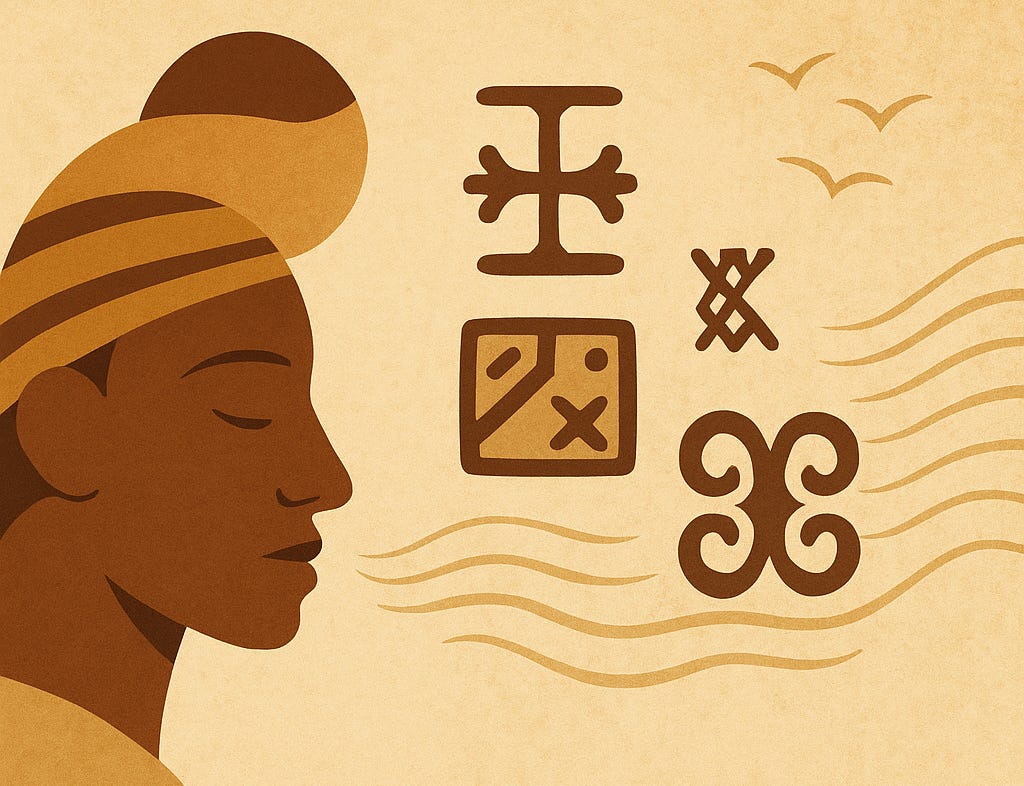In the rhythm of the savannah, not everything is said aloud. Some lessons ride on the back of silence. Some truths unfold when nothing is explained, yet everything is understood. In African epistemologies, learning often begins not with speaking, but with watching. Gesture and silence are not voids but vessels — tools of knowing.
Where the Western tradition exalts the word—codified, quoted, archived—many African knowledge systems whisper through gesture, intonation, sequence. To speak is not always to communicate. To observe is not to be passive. In many traditions, children are expected to learn not by asking, but by watching; to interpret tone, placement, and posture. These are epistemic tools, as structured and profound as any textbook.
Consider symbols. In West Africa, Adinkra symbols are more than motifs—they are visual encapsulations of moral, philosophical, and spiritual truths. "Eban" for safety. "Duafe" for cleanliness and feminine virtue. Nsibidi in Nigeria conveyed nuanced legal, social, and personal information through ideographic signs. Tifinagh, used by the Berber people, inscribes identity into desert stone and nomadic memory. These symbols are not static. They evolve, combine, and adapt—a visual logic system that is semantic, algorithmic, and aesthetic.
The savannah is itself a living text. Animal trails form a syntax of seasonal knowledge. The tilt of termite mounds points north. Rain patterns archive time. The river’s shape tells stories of erosion, patience, and replenishment. Navigation here is not just about direction—it’s about interpretation. A bent grass blade can reveal what passed by and when. Reading the landscape is reading a document authored by nature and edited by time.
And then there’s absence. In many African traditions, what is not said carries as much weight as what is spoken. Omission can be reverent, strategic, or didactic. Meaning emerges in the space between things—in silence after a proverb, in the seat left empty at a gathering, in the dance that ends just before the final beat. Presence and absence operate as a binary code—an African logic system that predates computation.
These methods of meaning-making—nonverbal, symbolic, spatial—are not relics. They echo in the very tools of our digital age. UX/UI design rewards clarity through minimalism, drawing heavily from symbolic reduction. Data visualisation thrives on abstracting the complex into the graspable—just as Adinkra does. Symbolic logic underpins AI, where the absence of a data point can be as telling as its presence. As we engineer artificial agents to learn from pattern and gesture, we are, in a way, returning to the oral and symbolic traditions that have long taught humans the same.
So, when the wind moves across the plains and no one speaks, it doesn’t mean the world is quiet. It means the world is teaching. And we must learn again how to listen—beyond words, beneath sound, into gesture, into symbol, into presence and absence.
The savannah thinks.
And sometimes, it teaches best when the wind blows.


